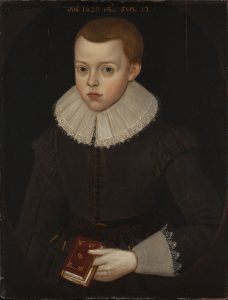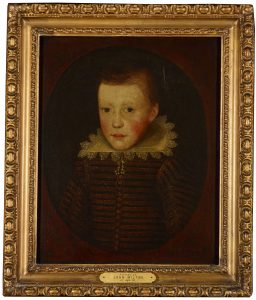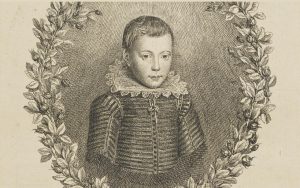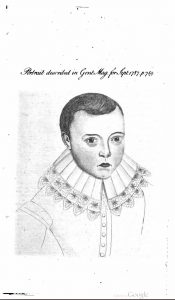
The question whether this could be a genuine portrait of a young John Milton (1608–1674) has occupied art historians for generations. Based on early sources, scholars believe that three portraits of Milton were created after life. Of these, the only one depicting him during childhood represented him as a schoolboy aged ten. This work is now thought to be in the collection of the Morgan Library in New York.

It has been proposed that the Picker’s painting is based on a 1760 print by Giovanni Battista Cipriani (1727–1785) that reproduces the Morgan portrait. If that is true, the portrait here should be considered a fictitious representation of the poet created only after 1760. But this portrait and Cipriani’s print also show notable differences in their costumes and facial features.

Another option, therefore, could be that the Picker’s portrait does not in fact represent Milton, but should be understood as that of a twelve-year old boy whose identity is no longer known. In that case, the work could be connected to a larger tradition of school-aged boys portrayed with books. This attribute sometimes represented the advanced education of boys in Latin school, which commenced around age twelve.
Furthering the enigma, a very similar portrait of a boy thought to be Milton at age twelve holding a copy of the Iliad, but dated 1623 instead of 1620, was published in 1787. If this work can be identified with the Picker’s portrait, its painted inscription must thus have been modified to correspond with Milton’s life dates. An x-ray image of the painting preserved in the Picker’s Collection Archive, however, does not show such an alteration.
The question whether this could be a genuine portrait of a young John Milton (1608–1674) has occupied art historians for generations. Based on early sources, scholars believe that three portraits of Milton were created after life. Of these, the only one depicting him during childhood represented him as a schoolboy aged ten. This work is now thought to be in the collection of the Morgan Library in New York.
It has been proposed that the Picker’s painting is based on a 1760 print by Giovanni Battista Cipriani (1727–1785) that reproduces the Morgan portrait. If that is true, the portrait here should be considered a fictitious representation of the poet created only after 1760. But this portrait and Cipriani’s print also show notable differences in their costumes and facial features.
Another option, therefore, could be that the Picker’s portrait does not in fact represent Milton, but should be understood as that of a twelve-year old boy whose identity is no longer known. In that case, the work could be connected to a larger tradition of school-aged boys portrayed with books. This attribute sometimes represented the advanced education of boys in Latin school, which commenced around age twelve.
Furthering the enigma, a very similar portrait of a boy thought to be Milton at age twelve holding a copy of the Iliad, but dated 1623 instead of 1620, was published in 1787. If this work can be identified with the Picker’s portrait, its painted inscription must thus have been modified to correspond with Milton’s life dates. An x-ray image of the painting preserved in the Picker’s Collection Archive, however, does not show such an alteration.

